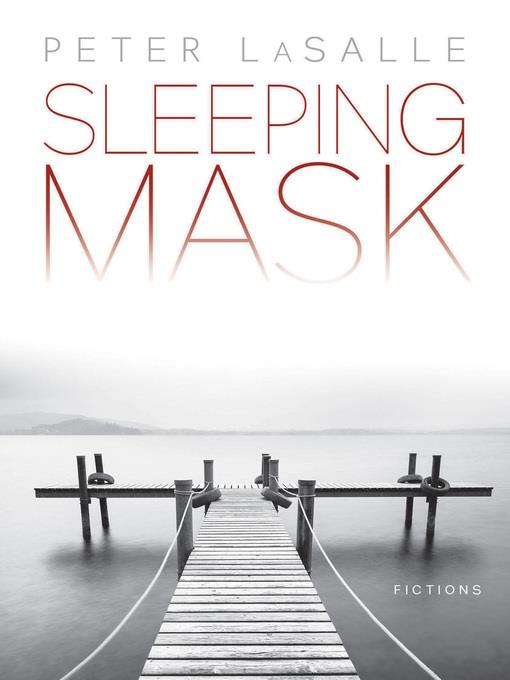
Sleeping Mask
Fictions
کتاب های مرتبط
- اطلاعات
- نقد و بررسی
- دیدگاه کاربران
نقد و بررسی

September 26, 2016
LaSalle’s languorous story collection rarely engages the reader’s attention fully. Despite the book’s Borges epigraph, fans
of the Argentine master will find the imitations in “Southern Majestic Zone” and “Boys: A New African Fable” lacking. Rather than getting readers to buy into
its Orwellian conceit, the former never convinces, and both stories tend toward whimsically simplistic voices. The personal histories are better, with moments of nostalgia obscured by unfortunate narrative choices, as in “The Flight,” where the sudden disappearance of a plane full of people manages to have less significance than the baseball glove the speaker once bought for his son, and “A Late Afternoon Swim,” in which the narrator’s recollection of a swimming excursion with his mother is undercut by an exhausting description
of the French dictionary that she may have had in her bag that day. A literature professor’s fairly successful date (“A Day in the Life of the Illness”) is pleasant and the standout of the collection.

Starred review from November 1, 2016
Twelve stories in a range of styles, each haunting and evocative.In the title story, LaSalle creates a menacing atmosphere involving a sleeping mask, "black velvet on the inside...magenta satin, shimmery, on the outside." A man offers it to his lover, who is never named and who never speaks. As he talks to her smoothly and incessantly, their relationship remains dark, mysterious, and disturbing. "What Can't Not Happen" at first seems a straightforward narrative of a group of college students visiting art museums in Paris. They go to the Louvre and the Musee d'Orsay, but something's weirdly out of kilter, for they're visiting late at night...and it turns out they're all dead. Two of LaSalle's experimental stories go in wildly different directions: "Found Fragment from the Report on the Cadaver Dogs of Northern Maine, 1962" consists of a single sentence in turbulent stream-of-consciousness, while "E.A.P.: A Note" reads like a scholarly article--complete with footnotes--on several telling dreams of Edgar Allan Poe. In addition to these experiments in fiction, LaSalle handles "realistic" stories particularly well, though he rarely strays far from a dreamlike atmosphere. Perhaps the best piece in the collection is the final one, "A Late Afternoon Swim," in which the narrator reminisces about a time when he was 11 or 12 and was encouraged by his mother to go swimming at a beach club in Rhode Island, an act about which he feels apprehensive. The narrator uses a French reference book his mother was reading at the time as a catalyst to move back and forth between memory and reality, chagrin and resentment, past and present. LaSalle's prose is lyrical, at times rhapsodic, and his characters memorable.
COPYRIGHT(2016) Kirkus Reviews, ALL RIGHTS RESERVED.

December 1, 2016
In "What Can't Not Happen," a typical yet not-so-typical story from this engaging collection, the supernatural finds a place as the spirits of several recently deceased teens visit a Paris art gallery. In "The Life of an Illness," a middle-aged literature professor battling cancer and self-doubt goes on the first date she's had in years. "Lunch Across the River" focuses on a Texas couple who find in the curious act of a Mexican drug lord the beginning of healing from the loss of a young child. "Boys: A New African Fable" explores the contradictory feelings of a group of teenage rebels who kidnap the students of a girl's school. LaSalle, a literary descendent of Borges and Nabokov, writes with the inventiveness of his predecessors. The danger of this approach is that the literary experimentation can sometimes overwhelm the work's emotional core, but it's a danger LaSalle wholly avoids. The characters are three-dimensional, and the plots and situations hold readers' interest. LaSalle is such a fluid writer that, in many cases, it can be easy to overlook the stylistic sleight of hand. VERDICT This work should easily find an audience beyond the academic literary departments and devotees of creative experimentation.--Lawrence Rungren, Andover, MA
Copyright 2016 Library Journal, LLC Used with permission.

December 15, 2016
LaSalle's (What I Found Out about Her, 2014) intricate collection features characters exploring their circumstances, expectations, and regrets and ruminating on artistry, literature, and mere existence. What Can't Not Happen follows a group of young Americans as they tour the Musee d'Orsay. The catch is they are no longer living; they are spirits. As the characters explore the exhibitions, the physicality of the artworks serves as a compelling contrast to their own nonexistence. Another tale follows a narrator plucked from a bus stop one evening by the wealthy, maniacal Trevor Oxnard, who needs help with an unusual project: the destruction of literary magazines. Child soldiers are the focus of Boys: A New African Fable as they invade an all-girls school. In the disquieting A Late Afternoon Swim, a man is propelled back to his childhood by a vision of his long-deceased mother at the beach, the past twined with moments from his present circumstance and remorse. LaSalle's dozen multifaceted tales challenge the reader to look beyond a linear narrative, as characters are propelled toward an unraveling, bewildering void.(Reprinted with permission of Booklist, copyright 2016, American Library Association.)

























دیدگاه کاربران